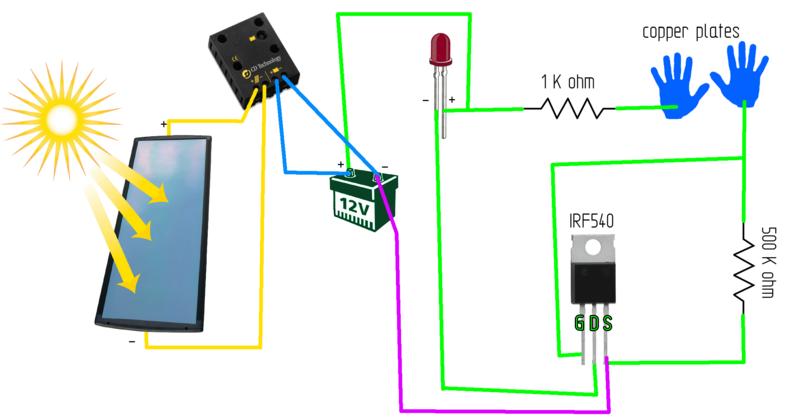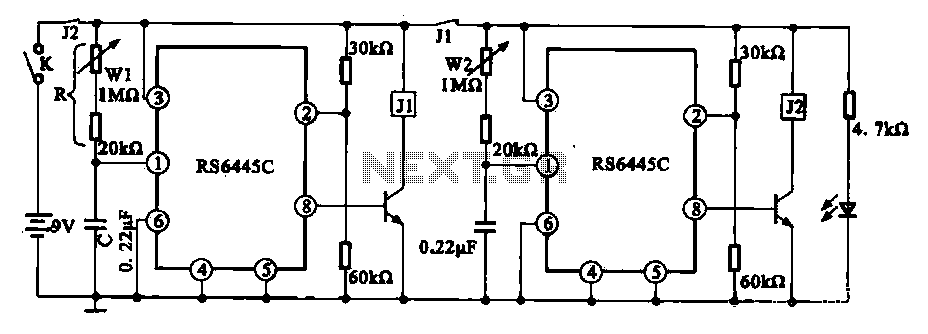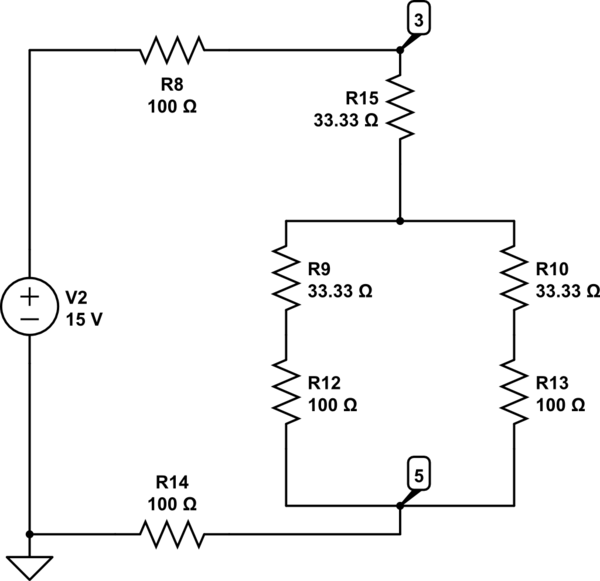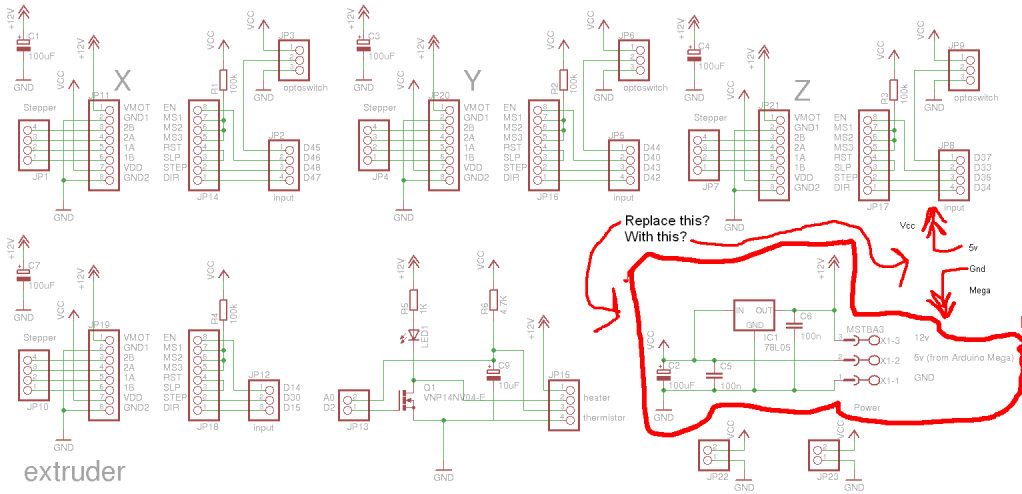
Divide-By-2-Or-3 Circuit
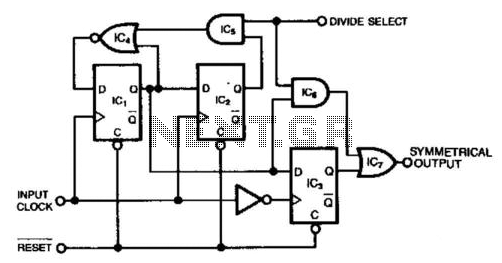
This circuit generates a symmetrical waveform by dividing the input frequency by either 2 or 3. The Divide Select input governs the division factor. When the Divide Select input is high, flip-flops IC1 and IC2, along with the associated gates, create a classic divide-by-3 circuit. Conversely, when the Divide Select input is low, the output of the AND gate, IC5, becomes low. As a result, the NOR gate, IC4, inverts the feedback signal and sends it to the D input of the flip-flop IC1. In this scenario, IC1 functions as a toggle flip-flop, producing a divide-by-2 output. IC3, which operates as a negative-edge-triggered flip-flop, delivers symmetrical output signals. When division by 2 is selected (Divide Select is low), the output of the AND gate IC6 is low, and IC3 simply outputs the divider's signal, delayed by one clock period. When the Divide Select is set high, the path to the output through the AND and OR gates, IC6 and IC7, is activated. This configuration allows the output to go high on the leading edge of IC3's input (rather than its output), resulting in a symmetrical divide-by-3 output.
The circuit operates based on a combination of digital logic components including flip-flops and gates. The primary components involved are two flip-flops (IC1 and IC2), which are configured to provide division by 3 when the Divide Select signal is high. This is achieved through a feedback mechanism that involves the AND gate (IC5) and the NOR gate (IC4), which together control the state of IC1.
When the Divide Select input is low, the circuit transitions to a divide-by-2 configuration. The AND gate IC5 outputs low, causing the NOR gate IC4 to invert the feedback signal, which in turn toggles the state of IC1. This configuration allows IC1 to function as a toggle flip-flop, effectively altering the output frequency to half the input frequency.
IC3 plays a crucial role in generating symmetrical output signals. It is designed as a negative-edge-triggered flip-flop, which means it responds to the falling edge of the clock signal. When the circuit is set for division by 2, IC3's output is simply a delayed version of its input, maintaining the integrity of the signal while providing the necessary timing adjustments.
When the circuit is switched to divide by 3, the output path through gates IC6 and IC7 becomes active. This allows the output to respond to the leading edge of the input signal from IC3, rather than the output itself. The result is a symmetrical divide-by-3 output, which is essential for applications requiring precise timing and waveform generation.
In summary, this circuit effectively utilizes flip-flops and logic gates to achieve frequency division by 2 or 3, providing a versatile solution for applications that demand symmetrical waveforms at different frequency ratios. The careful design of the feedback and control mechanisms ensures reliable operation across both division modes. This circuit produces a symmetrical waveform when dividing by either 2 or 3. The Divide Select input controls the division factor. When Divide Select is high, flip-flops IC1 and IC2, along with associated gates, form the classical divide-by-3 circuit. When divide select is low, however, the output of the AND gate, IC5, goes low. Consequently, the NOR gate, IC4, inverts the feedback signal and passes it to the D input of the flip-flop, IC1.
Now, IC1 acts like a toggle flip-flop and produces a divide-by-2 output. IC3, which is, in effect, a negative-edge-triggered flip-flop, provides symmetrical output signals. When you select division by 2 (Divide Select is low), the output and AND gate IC6 is low, and IC3 simply clocks out the divider"s output, delayed by one clock period. When you set Divide Select high, the path to the output through the AND and OR gates, IC6 and IC7, is enabled.
This path means that the output goes high on the leading edge of IC3"s input (not its output) and produces a symmetrical divide-by-3 output. 🔗 External reference
The circuit operates based on a combination of digital logic components including flip-flops and gates. The primary components involved are two flip-flops (IC1 and IC2), which are configured to provide division by 3 when the Divide Select signal is high. This is achieved through a feedback mechanism that involves the AND gate (IC5) and the NOR gate (IC4), which together control the state of IC1.
When the Divide Select input is low, the circuit transitions to a divide-by-2 configuration. The AND gate IC5 outputs low, causing the NOR gate IC4 to invert the feedback signal, which in turn toggles the state of IC1. This configuration allows IC1 to function as a toggle flip-flop, effectively altering the output frequency to half the input frequency.
IC3 plays a crucial role in generating symmetrical output signals. It is designed as a negative-edge-triggered flip-flop, which means it responds to the falling edge of the clock signal. When the circuit is set for division by 2, IC3's output is simply a delayed version of its input, maintaining the integrity of the signal while providing the necessary timing adjustments.
When the circuit is switched to divide by 3, the output path through gates IC6 and IC7 becomes active. This allows the output to respond to the leading edge of the input signal from IC3, rather than the output itself. The result is a symmetrical divide-by-3 output, which is essential for applications requiring precise timing and waveform generation.
In summary, this circuit effectively utilizes flip-flops and logic gates to achieve frequency division by 2 or 3, providing a versatile solution for applications that demand symmetrical waveforms at different frequency ratios. The careful design of the feedback and control mechanisms ensures reliable operation across both division modes. This circuit produces a symmetrical waveform when dividing by either 2 or 3. The Divide Select input controls the division factor. When Divide Select is high, flip-flops IC1 and IC2, along with associated gates, form the classical divide-by-3 circuit. When divide select is low, however, the output of the AND gate, IC5, goes low. Consequently, the NOR gate, IC4, inverts the feedback signal and passes it to the D input of the flip-flop, IC1.
Now, IC1 acts like a toggle flip-flop and produces a divide-by-2 output. IC3, which is, in effect, a negative-edge-triggered flip-flop, provides symmetrical output signals. When you select division by 2 (Divide Select is low), the output and AND gate IC6 is low, and IC3 simply clocks out the divider"s output, delayed by one clock period. When you set Divide Select high, the path to the output through the AND and OR gates, IC6 and IC7, is enabled.
This path means that the output goes high on the leading edge of IC3"s input (not its output) and produces a symmetrical divide-by-3 output. 🔗 External reference
